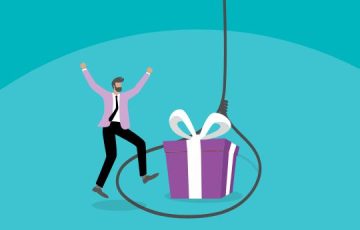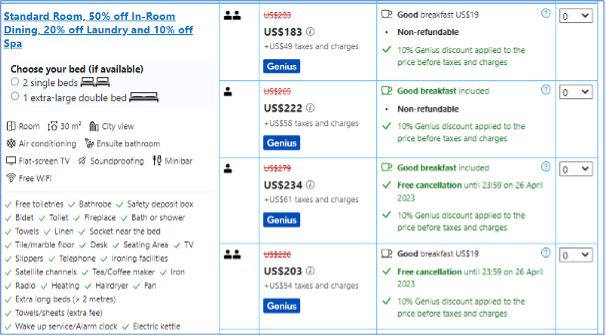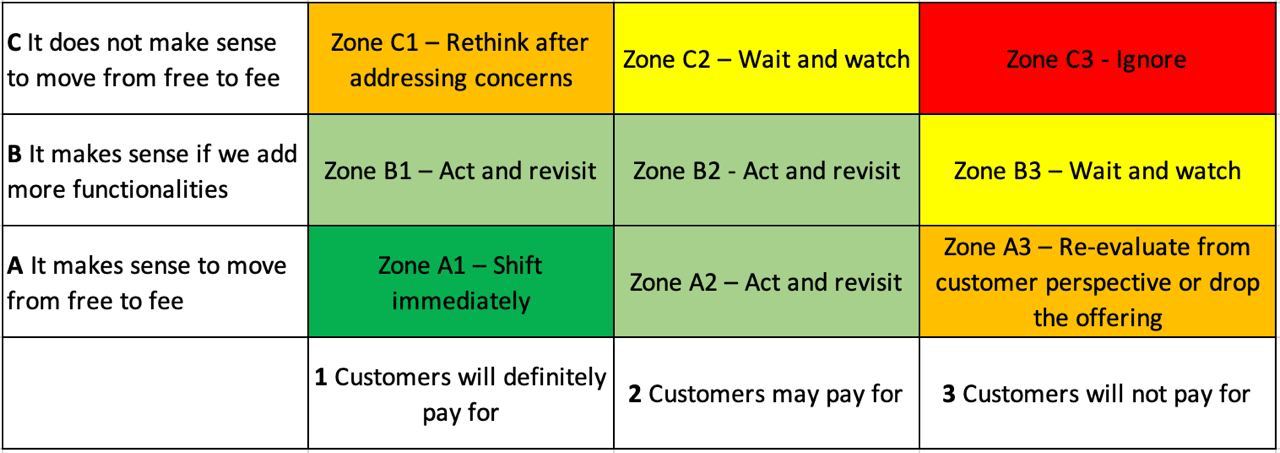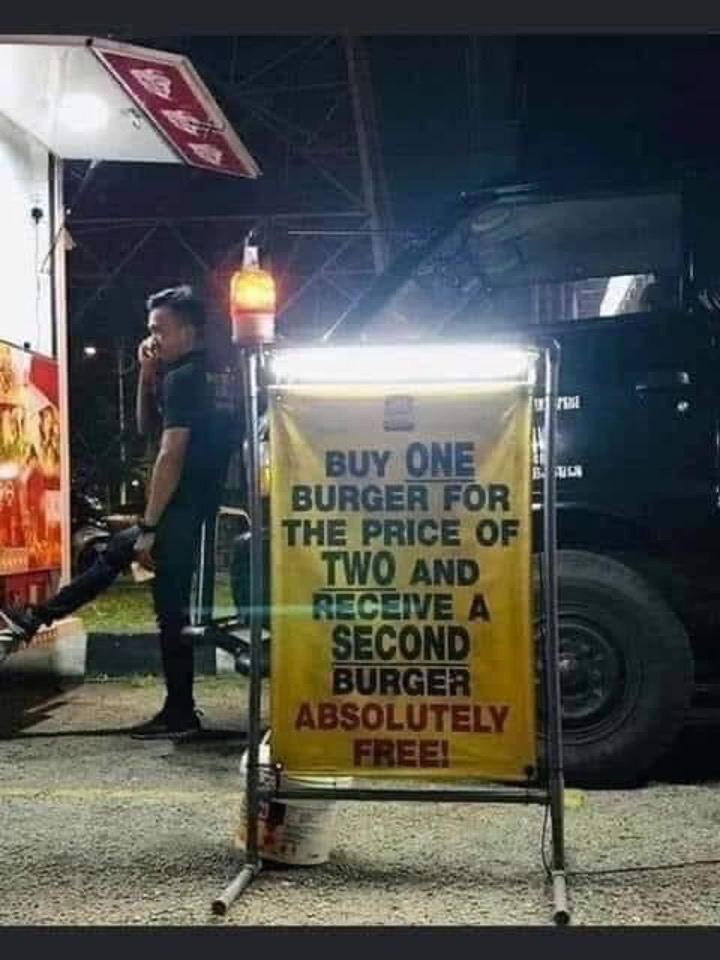
Good always has a price, Marcus. Evil comes free. – Donato Carrisi in The Lost Girls of Rome
The Truth Behind Bugis Street and Other Shopping Streets Across the World
Singapore, along with New York city is the most expensive city in the world, though the Singapore government has been trying a lot to make the city affordable. Contrary to the norm, Bugis Street in Singapore, is known for its affordable fashion goods and is a hotspot to buy a lot of unique stuff. Naturally, the average tourist heads off to Bugis Street to buy chocolates and fridge magnets to gift friends and family back home.
I also headed to Bugis Street to make the best use of the limited Singapore Dollars that I had after exchanging my hard-earned Indian Rupee. I was looking for fridge magnets and wanted something that reflects the true Singapore culture. And I was lucky to find a few fridge magnets in the first shop itself that I entered. The deal was good, at that time. They were offering 2 fridge magnets for SGD10 with one free. I was happy to get lucky and immediately purchased it without any second thought. And then I moved on to my second target – chocolates for my friends and family. Walking around, with a bottle of coconut water, I was surprised that as I moved further into the street, there were plenty of shops selling fridge magnets. The surprise was not because of the variety on offer, but more so because of the sheer number of shops. My surprise gradually made way for disappointment as I found out that the shops further into the street were selling the same fridge magnet for a lower price. As I reached the end of one street, the price had dropped so low that 2 fridge magnets were available for SGD5 and 5 were available for SGD10.
My biggest learnings – the first one was to not get fooled when we hear the magic four letter word FREE, and the second was to walk around similar shopping streets before making your final purchase. Whether it is the Pondy Bazaar in Chennai, or the Chatuchak weekend market in Bangkok, while the lure of free always exists, remember that nothing is free. And when you get something for free, you are really paying for the product in a form of currency that you are not aware of. In this context, the extra amount that I paid, and the mirage of the free fridge magnet, was the cost I paid for not walking around and checking out all the options available.
The Mirage of Free Products and Free Breakfasts
Free products are around us everywhere. Right from Gmail and Google Maps that most of us use to the supposedly ‘free’ breakfast that we get in hotels, ‘FREE’ has become a norm. We really do not like to pay for services that are normally given to us for free. For example, will people use Gmail if Google decides to charge us a recurring fee of $1 every month, or if Google Maps asks for 20c for showing every direction that is greater than 10 miles. I am sure these products would not have had huge customer bases if they were not free.
But they are not free.
While we will come to the example of Gmail and Google Maps later, let me share a simple fact with you that has been hidden in plain sight. Look at the screenshot taken from a travel portal for a hotel in Dubai. For the same room, the rates run from $183 to $234 excluding taxes.

But for two things – breakfast (usually mentioned as free by the hotels) and for cancellation (mentioned as free in this portal), we end up paying more. So, is it technically free, or are we paying more for a privilege that we may end up not using? Is the breakfast in the hotels really free, or are we paying for the comfort of not having to search for the best breakfast first thing in the morning? I wonder what the late risers, who rarely have breakfast, will say.
You see, everything costs money, and even if a product is free, it is technically not free at all. Coming back to Gmail, while we do not pay money to use it, we do share with them a lot of information that Google would kill for. And Google makes money by using this data for showing us personalized ads. Or in other words, you pay Google with access to your data. The same is true for Facebook or Google Maps. Data is the currency that organizations like Facebook and Google Maps accept.
But What Is the Problem With Free Products?
It is not really free
Free Medicare to all! Free education for all! Free houses for all! Free laptops for all students!
Governments across the world have been on a spending spree to offer freebies to their citizens. While this strategy does help the people who receive the freebies (healthcare, education, or even daily staples), it also has its own disadvantages. The most important disadvantage is the fact that it is not a freebie. Someone else is paying for it in the form of tariffs or taxes. And is cross subsidizing the cost of these freebies.
Even the free products that are sold by many organizations are not free. The cost of these ‘free’ products are included in the price of other products sold by these organizations. It is the same with the hotels and Gmail that we saw before. The mirage of a free product is probably the greatest marketing gimmick.
It is not sustainable
Giving something to a customer at zero cost is not sustainable in the long run. It affects unit economics and can affect the profitability of the firm in the short and long term. Even when an organization decides to offer a product for free, it still has to pay:
- The vendors who provided the materials to make the product.
- The employees who contributed to building the product.
- The partners who rendered services to build and deliver the product.
- The manufacturing cost including water and power that was used to build the product.
An organization cannot offset these costs, and most of these are sunk costs. So, any product that is given for free is technically a product that is sold at a loss. And no business can sustain itself on losses.
Remember the story of Webvan? To compete with existing grocers and attract more users to its platform, Webvan offered free delivery, but this inadvertently hampered its overall revenue as it was not sustainable to continue offering free deliveries.
It creates an entitlement mindset
I remember using a delivery service a couple of years ago. While the charges were high, I remember that they offered a free coffee or a free dessert if we ordered from a set of identified restaurants. And I used to take that cup of coffee even if I did not need that. While the free cup of coffee did spoil my sleep a few times, I always felt that it was worth it. And once the delivery platform’s algorithm decided that I was addicted to the app, they gradually pulled back the offer. I do hate personalized offers. And as a mark of revenge, I decided to stop ordering from them and switched on to another delivery app.
Once they pulled back the free coffee, there was no point of differentiation between the delivery apps. At least for me. And by making me habituated to the free coffee, I guess I had a sense of entitlement towards getting a cup of coffee every time I order.
Yes, it is good to give a free product once, and OK to do it twice. But do it again, and the chances of creating an entitlement mindset with customers is high. In his book ‘Predictably Irrational’, Dan Ariely talks of how people respond when something free comes along. He calls it a very powerful emotional trigger that is sometimes so irresistible that it makes people lug home useless keychains and buy tight pants just to get an additional pair at no extra cost.[i] And when this emotional trigger is taken off, people tend to react in irrational ways. I remember the uproar when YouTube introduced ads or when Snapchat introduced paid features. Customers threatened to move out and some moved out to other platforms. But these platforms have continued to thrive and succeed. And in some cases, organizations have withdrawn the paid model and gone back to a free model to explore other revenue options. Case in point being WhatsApp which dropped the idea of a subscription fee to become fully free.
It sacrifices potential revenue
I have read of the case of a forklift manufacturer who, in a 2-day workshop for their managers, identified that out of the 80 services the company provided free of charge, 22 of them offered a real chance for revenue generation. And over a period of the next six months, it was able to move 14 of these services from free to fee. It involved charging for services such as on-site equipment diagnostics, and consulting services etc.[ii] Through this, the forklift manufacturer was able to add more to their revenue.
Many organizations do not realize that many customers are willing to pay for many products and services that they offer for free. And by not realizing this, organizations are putting away a shot at a larger share of wallet from the customer. And sadly, these customers may not even know that these products and services were offered for free and may not even be aware of some of them. There is an upside that is waiting to be explored, and I hope organizations realize this.
It sends across a wrong signal to your customers, employees, and partners
Remember the article where I mentioned that price is much more than a number and is in fact a signal? Well, for a free product, the signals may not be well received by the other stakeholders like the customers, employees, and partners.
Let me explain. If an organization offers a product as a free add-on to another product (for example a software is offered along with another software for a business customer), the employees who would have worked on that product may feel a bit let-down unless it was already communicated that this product was always going to be free. And if it was communicated that this product was going to be free, the team may not have worked on it with complete enthusiasm and dedication.
Even customers may feel a bit confused. While they will not mind a product that is offered for free, they will probably question the quality of the product, and in turn might not be able to perceive the true value of the product. And like I mentioned before, the chances of creating an entitlement mindset are also high.
But most importantly, it sends a wrong signal to your partners, which include the organization’s suppliers as well as its resellers. The suppliers may be resentful because the decision to offer a product for free may force the organization to renegotiate the terms of payment with them. The resellers, or other partners, ahead of the organization in the value chain, may feel hard pressed because they must forgo their commissions, which may have been linked to the overall revenue from the product.
In short, the chances of negatively disrupting the entire ecosystem are high.
It harms competition
Governments do not really like monopolies. It is no wonder Google has been fined close to $10 billion in Europe alone by various regulatory bodies. And the likes of Facebook, Apple, Samsung, and other tech giants are not far behind. Providing a product for free is taking predatory pricing to the next level, and it can stifle and destroy competition.
Remember why Instagram was able to beat Snapchat when it came to scaling up? It was because Instagram was able to offer its services for free as it had financial backing and userbase of Facebook behind it. And Snapchat had to play catchup. It was also the reason Google Maps was able to beat several other mapping software who could not afford to offer their services for free. It is also the reason why Amazon, with its ability to ship freely, thanks to its vast network, can undercut many of the upcoming e-commerce startups.
By providing a product or a service for free, and by doing it for a long time, organizations are really undercutting their competition and taking the price war to the extreme where only the organizations with the right set of resources may survive. And it may not always be in the best interest of market innovation that free products are promoted.
But What If We Really Want to Give Something for Free?
Some things really should be free because that is the way it was designed. And it makes sense in the larger scheme of things.
Let me explain with an example.
Every year in summer, Central Park, New York city, plays host to a series of concerts called SummerStage. These concerts[iii] costs upwards of $100,000 to conduct. The line-up of performers include some well-known singers and musicians. And most of them are sell outs. Do you know why? Because these shows, apart from the benefit concerts, are free.
Yeah, they do have VIP tickets that range around $1,500 offering behind the scenes access and the privilege of entering the VIP tent and accessing an open bar, but those are limited. The remaining part of the cost is funded by donations, membership fees, venue rentals, and benefit concerts. And I believe they do make money because these concerts are held every year.
But why do the organizers want to keep these concerts free? Because they believe that music should be accessible to everyone. By doing this, they are taking forward their vision, and building a community that understands and respects music. And because entry is free, customers are also open to experiment with new genres and new musicians. Moreover, the area around Central Park gets a boost. Or in other words, everyone stands to gain.
While the concept of SummerStage and its pricing was for a noble cause, there are other situations that demand a free product or a service.
The currency is different
We humans are tuned to think in terms of monetary value or in terms of units that make sense. We think of price as units of money. We think of distance as units of distance (kilometers, miles.) or time (hours, minutes etc.) when we say that a place is five miles away or another place is fifteen minutes away.
But there are products which seem free because we do not pay them money or do not travel to use them. We are paying for them in a different form of currency. For example, let us take the case of Instagram. It is completely free to use. And it is also addictive. No wonder the average person in the US spends nearly half an hour on Instagram. And no wonder Instagram is the most downloaded app in the world, ahead of TikTok, Facebook, and WhatsApp.[iv] And in 2022, Instagram generated more than $50 billion in revenue. That is a cool $300 revenue per user. And all of this comes from ads, and not a single penny from the user.
But the users also pay Instagram. It is just that it is not in terms of money. We pay in terms of our attention, and in terms of the data that we give to Instagram. The tons of data that we generate and share with Instagram is the product that they sell to the advertisers, who in turn pay Instagram. Facebook, YouTube, and Google Search – all are examples of organizations that we pay for with the currency we call data. Even Mozilla earns money through deals with search engine partnerships and tie-ups with open-source providers by sharing tons of data and by selling the rights to exclusivity in its browser.
This is also the case when we drive 30 minutes to go to the free-swimming pool or ride a bike to reach the free jogging area that is 5 miles away. For accessing the free-swimming pool or the jogging area, the currency we are using is our time. When we pay for a ticket with the loyalty points that we earned through card usage, we are paying for the purchase through the charges that were levied on us for using the credit card. Nothing is free. It is just that we are using a different form of currency to pay.
An ecosystem is the end goal
Launched in 2016 in India, Jio has quickly become India’s largest telecom operator and the third largest telecom operator in the world. And contrary to traditional telecom operators, they gave free voice plans during a time when voice was contributing to nearly 70% of the revenue of telecom operators in India.
Jio could have made a splash by charging for their voice plans, but they let go of the small chunk of revenue from voice to gain a foothold in the industry and get users hooked onto their larger vision –an ecosystem of apps and services that include e-commerce, healthcare plans, flight tickets, insurance, movies, music, and even a software development kit for software to design, develop, and deploy apps. Platforms like Kickstarter, Indiegogo, or even TaskRabiit do not charge any initial fees from their customers or service providers because their vision is to create an ecosystem in their respective industries, and the joining fee may only be a small chunk in the larger share of revenue that they can forego.
Get customers hooked
Do you know what made Dropbox special? It was their freemium model that led users to explore the concept of cloud storage and help the customers get used to it at a time cloud storage was not popular. There were apprehensions about security, accessibility, and functionality, and giving a sample was the only way for Dropbox to overcome these apprehensions.
Through their free trial model, aimed at the people who really wanted on-the-go storage, Dropbox was able to break down these barriers and scale up. By using this free trial model, Dropbox was also able to get a significant volume of customers to use their product, thus creating the famous network effect. The positive product experience also created a great word of mouth which led to great brand recognition.
Offering a free trial, or following the freemium model, has been one of the go-to strategies of new age companies, especially the SaaS ones. Even media outlets like Wall Street Journal and The Harvard Business Review offer a variation of the freemium model. It has become popular as it offers the customers a chance to try out a product. And it also offers organizations a chance to impress upon the users to move up the value chain by purchasing the higher version of their product.
Get repeat purchases
Let us consider two products – Product A with a selling price of USD30 and a shipping charge of USD6, and Product B with a selling price of USD36 with free shipping. For a moment, let us assume that both the products are identical twins. Research[v] has shown that customers will prefer buying Product B because of the apparent ‘free shipping’ even though both products cost the same.
Amazon Prime also works on the same principle. By offering a host of services including free shipping, Prime Video, and Prime Music that the subscribers of Amazon Prime get, Amazon is targeting repeat purchases, with everything else being akin to the click-bait that is seen in most YouTube videos.
Offering a product for free, or a sample for free generally helps users forget the quality and increases brand loyalty. In fact, studies show that a staggering 90% of consumers say a free gift with a purchase increases brand loyalty. In fact, as the study says, “if the gift with a purchase promotion is offered ‘when stocks last’, or for a ‘set period of time’, it plays into the ‘scarcity principle of persuasion’ coined by Dr Robert Cialdini. This works on the idea that the rarer or more difficult it is to obtain a product or an offer, the more valuable it becomes. If a customer thinks this offer will expire or will soon become unavailable to them, they are more likely to buy. The gift also adds value to a purchase and, in the majority of cases, is both exclusive and desirable, therefore giving the consumer a stronger incentive to buy. It enhances their buying experience and gives them a greater sense of loyalty.’[vi]
And for Everything Else?
Move from free to fee wherever possible.
Organizations must get a team including the people on the ground, and the people building the product, and identify the services that they are offering for free but can be given for a fee. These services and products must be categorized into the following categories:
- Customers will definitely pay for
- Customers may pay for
- Customers will not definitely pay for
Then divide each of these into two further categories – A) it makes sense to move from free to fee, B) it makes sense if we add more functionalities/services, and C) it does not make sense to move from free to fee right now.

Organizations must get into the minutest detail and categorize each of their products and services into these categories. And act accordingly. They must also ensure that the sales folks’ and the relevant stakeholders’ inputs are considered.
So, Is the Second Burger Free?

The word FREE draws out an animal instinct from humans and makes them irrational. Organizations, over the years, have understood it. And many organizations have succeeded by offering products for free. A case in point is Microsoft that transformed the internet browsers through its famous Internet Explorer that it offered for free with Windows 95. Or Gillette, that in the early 1900s, began offering a free razor handle to customers who purchased blades. This strategy helped to popularize the use of safety razors and established Gillette as a leading brand in the shaving industry.
But a free product is always a mirage and a double-edged sword. Customers always pay a cost, even if the cost is not clearly visible. And organizations must understand the side-effects of offering a product for free. All said and done, organizations cannot escape the lure of free products.
Customers who understand that there is no free lunch, and organizations who can handle this double-edged sword are the need of the hour. And the irony is that while you may feel that you read this article for free, you did pay with your time, and attention.
No Comments yet!